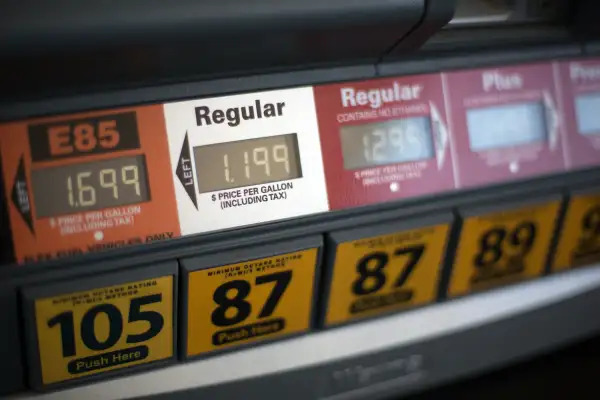The Sneaky Way You Could Be Paying More for Gas Than You Think

The price of a gallon of regular almost always gets top billing at gas stations signs near the side of the road. Understandably so—it's the cheapest and most popular option for drivers.
The price of regular will catch the eyes of drivers even if they fill their vehicles with a higher grade of fuel. After all, for a long time, the premium one expected to pay for a gallon of premium held fairly steady, at around 8% more than the cost of a gallon of regular. If you spotted the price of regular while driving by, you had a very good idea of what the premium octane would cost.
Yet drivers who have been blindly assuming that premium gas costs a couple of dimes more per gallon than regular are in for a rude awakening. As Automotive News reported, there are gas stations around the country charging 50%, 60%, and even 82% more for premium gas compared to regular.
From 2010 to 2014, a gallon of premium gasoline cost 7% to 10% more than regular, on average. In 2015, however, the price difference leapt to 17%, and in February 2016 it was up to 27%. In terms of real prices, in 2010 and 2011, the average gallon of premium cost around 25¢ more than regular. By 2015, the difference was 40¢, and last month it hit 48¢.
There is no single reason why there's now a larger premium for premium gas. To some extent, gas stations have been charging more for premium for months simply because they can. The vendors are compelled to compete aggressively with other gas stations when it comes to regular gasoline. On the other hand, there's an assumption that drivers who fill up with premium are big spenders who are less likely to be price sensitive. The thinking is that these drivers won't care if premium is 20¢, 30¢, or even 50¢ higher than regular—especially not when all gas seems cheap compared to a few years ago.
The pricing difference has grown so large that the added cost of premium gas can easily outweigh the potential savings drivers get from the higher fuel economy provided by higher-octane gasoline. That's assuming they get higher fuel economy by using pricier gas.
Read next: 5 Cheap Gas Factoids That’ll Get Your Motor Running
As Edmunds has pointed out, many cars get no fuel efficiency boost whatsoever through the use of premium gas. The only vehicles that need premium gas are those that specifically state it's required. (They're often European cars, luxury models, and/or turbos; conveniently, Edmunds has compiled a list of them.)
For another category of vehicles, it's merely "Recommended" that premium gasoline be used. In this case, you're not hurting your car by filling it with regular gasoline, nor are you significantly diminishing the mileage it gets. So when the price difference between regular and premium is as big as it's been lately, the choice becomes a no-brainer: Just stick with regular.
